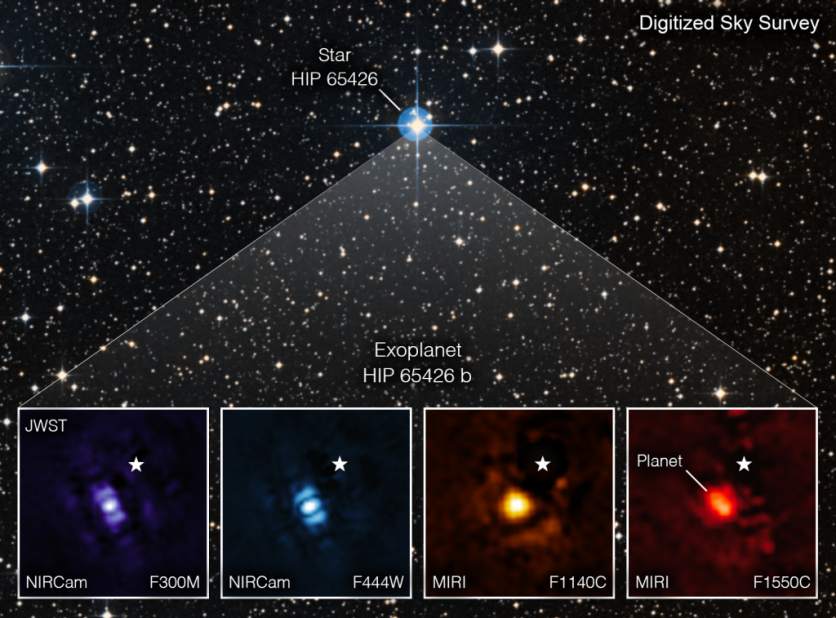NASA's James Webb Space Telescope has achieved a historic milestone as it ushers in a new era of astronomy.
Astronomers have used Webb's telescope to capture a direct image of a planet outside our solar system for the first time. According to NASA, the exoplanet is a gas giant with no rocky surface, which means the planet is not habitable.

The HIP 65426 b Exoplanet
The image, as shown through four different light filters, demonstrates how Webb's strong infrared vision can readily capture worlds outside of our solar system, paving the path for upcoming observations that will provide more information about exoplanets than ever available.
The HIP 65426 b exoplanet in Webb's image has a mass that ranges from six to twelve times that of Jupiter, and these observations may further refine that range. In comparison to our 4.5 billion-year-old Earth, it is a young planet, which is only around 15 to 20 million years old.
Short infrared light waves were used to capture photographs of the planet discovered in 2017 by astronomers using the SPHERE instrument on the Very Large Telescope of the European Southern Observatory in Chile.
The intrinsic infrared glow of Earth's atmosphere prevents ground-based telescopes from picking up additional details but Webb's perspective at longer infrared wavelengths can bring out sharp details.
The information gathered from these observations has been analyzed by researchers, who are currently writing a report that will be submitted to journals for peer review. This means that Webb's initial exoplanet capture already hints at future opportunities for researching far-off planets.
Read Also : Deep Space Music: Listen to NASA James Webb Space Telescope Images Translated Into Sounds!
Far Away From Host Star
HIP 65426 b is too far away from its host star for Webb to distinguish them apart in the image since it is 100 times further away from its host star than Earth is from the Sun.
NASA noted that stars are far brighter than planets, which makes it more difficult for space observatories to take direct photographs of exoplanets. The HIP 65426 B is a few thousand times fainter than its host star when viewed in the near-infrared spectrum.
But Webb can directly observe some exoplanets like this one since its near-infrared camera (NIRCam) and mid-infrared instrument (MIRI) are both fitted with coronagraphs, which are little masks that block out the starlight.
The planet appears as a somewhat distinct-looking blob of light in each image produced by the filter. This is due to the specifics of Webb's optical system and how it converts light through the various optics.
"Obtaining this image felt like digging for space treasure," Aarynn Carter, a postdoctoral researcher at the University of California, Santa Cruz, and head of the analysis of the images, said in a statement.
HIP 65426 b marks the way forward for Webb's exoplanet exploration, even though this is not the first direct image of an exoplanet to be taken from space since the Hubble Space Telescope has already captured direct planetary photographs.
Related Article : [LOOK] NASA James Webb Space Telescope's Largest Image of the Universe to Date - Made Out of 690 Individual Frames!
This article is owned by Tech Times
Written by Joaquin Victor Tacla
ⓒ 2025 TECHTIMES.com All rights reserved. Do not reproduce without permission.




